One-way ANOVA test: Concepts, Formula & Examples
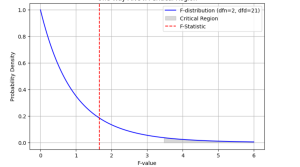
The one-way analysis of variance (ANOVA) test is a statistical procedure commonly used to compare the means values on a specific variable between three or more groups. The significance of the difference between the means of two samples can be judged through either t-test or z-test depending upon different criteria, but it becomes tricky when there is a need to simultaneously evaluate the significance of the difference amongst three or more sample means. This is where one-way ANOVA test comes to rescue. The ANOVA technique enables us to perform this simultaneous test and as such is considered to be an important tool of analysis. As data scientists, it is of …
Neyman-Pearson Lemma: Hypothesis Test, Examples
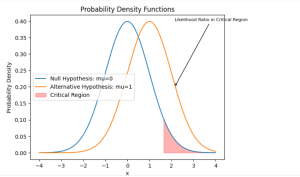
Have you ever faced a crucial decision where you needed to rely on data to guide your choice? Whether it’s determining the effectiveness of a new medical treatment or assessing the quality of a manufacturing process, hypothesis testing becomes essential. That’s where the Neyman-Pearson Lemma steps in, offering a powerful framework for making informed decisions based on statistical evidence. The Neyman-Pearson Lemma holds immense importance when it comes to solving problems that demand decision making or conclusions to a higher accuracy. By understanding this concept, we learn to navigate the complexities of hypothesis testing, ensuring we make the best choices with greater confidence. In this blog post, we will explore …
Pandas CSV to Dataframe Python Example
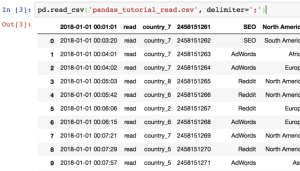
Converting CSV files to DataFrames is a common task in data analysis. In this blog, we’ll explore a Python code example using the Pandas library to efficiently convert CSV files to DataFrames. This approach offers flexibility, speed, and convenience, making it a valuable technique for handling large datasets. Read CSV into Pandas Dataframe The following is the code which can be used to read the CSV file from local drive: In case, you want to read CSV file from the URL, the following will be the code. As a matter of fact, nothing changes except for the fact that you pass the URL to read_csv function. The following are some …
Google Unveils Next-Gen LLM, PaLM-2
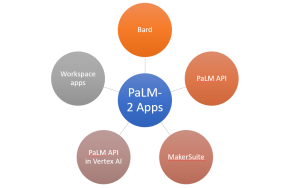
Google’s breakthrough research in machine learning and responsible AI has culminated in the development of their next-generation large language model (LLM), PaLM 2. This model represents a significant evolution in natural language processing (NLP) technology, with the capability to perform a broad array of advanced reasoning tasks, including code and math, text classification and question answering, language translation, and natural language generation. The unique combination of compute-optimal scaling, an improved dataset mixture, and model architecture enhancements is what powers PaLM 2’s exceptional capabilities. This combination allows the model to achieve superior performance than its predecessors, including the original PaLM, across all tasks. PaLM 2 was built with Google’s commitment to …
Occam’s Razor in Machine Learning: Examples
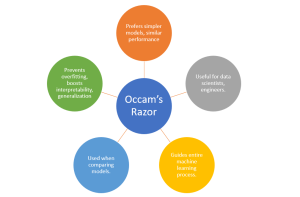
“Everything should be made as simple as possible, but not simpler.” – Albert Einstein Consider this: According to a recent study by IDC, data scientists spend approximately 80% of their time cleaning and preparing data for analysis, leaving only 20% of their time for the actual tasks of analysis, modeling, and interpretation. Does this sound familiar to you? Are you frustrated by the amount of time you spend on complex data wrangling and model tuning, only to find that your machine learning model doesn’t generalize well to new data? As data scientists, we often find ourselves in a predicament. We strive for the highest accuracy and predictive power in our …
Generative AI Risks & Concerns: Examples
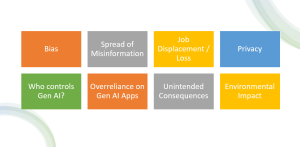
In the ever-evolving realm of artificial intelligence, generative AI has emerged as a groundbreaking technology, capable of producing incredibly realistic and creative content. From generating art and music to crafting compelling stories and even mimicking human conversations, the possibilities seem endless. Here is a sample representing AI generated talk between Bill Gates & Socrates. You can as well imagine about the endless possibilities. As with any powerful tool, there are risks and concerns related to generative AI that need to be addressed. In this blog, we will delve into the fascinating world of generative AI and explore some of the key concerns it brings forth. We will learn with some …
Outlier Detection Techniques in Python: Examples
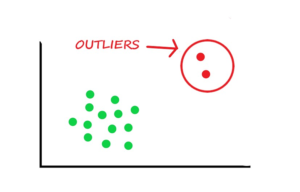
In the realm of data science, mastering outlier detection techniques is paramount for ensuring data integrity and robust machine learning model performance. Outliers are the data points which deviate significantly from the norm. The outliers data points can greatly impact the accuracy and reliability of statistical analyses and machine learning models. In this blog, we will explore a variety of outlier detection techniques using Python. The methods covered will include statistical approaches like the z-score method and the interquartile range (IQR) method, as well as visualization techniques like box plots and scatter plots. Whether you are a data science enthusiast or a seasoned professional, it is important to grasp these …
Lime Machine Learning Python Example

Today when core businesses have started relying on machine learning (ML) models predictions, interpreting complex models has become a necessary requirement of AI governance (responsible AI). Data scientists are often asked to explain the inner workings of a machine learning models for understanding how the decisions are made. The Problem? Many of these models stand out as “black boxes“, delivering predictions without any comprehensible reasoning. This lack of transparency (especially in healthcare & finance use cases) can lead to mistrust in model predictions and inhibit the practical application of machine learning in fields that require a high degree of interpretability. It could lead to erroneous decision-making, or worse, legal and …
Boston Housing Dataset Linear Regression: Predicting House Prices
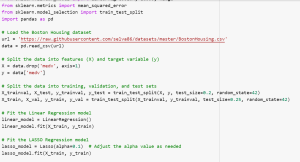
Predicting house prices accurately is crucial in the real estate industry. However, it can be challenging to determine the factors that significantly impact house prices. Without a clear understanding of these factors, accurate predictions are difficult to achieve. The Boston Housing Dataset addresses this problem by providing a comprehensive set of variables that influence house prices in the Boston area. However, effectively utilizing this dataset and building robust predictive models require appropriate techniques and evaluation methods. In this blog, we will provide an overview of the Boston Housing Dataset and explore linear regression, LASSO, and Ridge regression as potential models for predicting house prices. Each model has its unique properties …
ChatGPT Cheat Sheet for Data Scientists
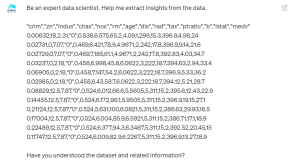
With the explosion of data being generated, data scientists are facing increased pressure to analyze and interpret large amounts of text data effectively. However, this can be a challenging task, especially when dealing with unstructured data. Additionally, data scientists often spend a significant amount of time manually generating text and answering complex questions, which can be a time-consuming process. Welcome ChatGPT! ChatGPT offer a powerful solution to these challenges. By learning different ChatGPT prompts, data scientists can significantly become super productive while generating relevant insights, answer complex questions, and perform machine learning tasks with ease such as data preprocessing, hypothesis testing, training models, etc. In this blog, I will provide …
How does Dall-E 2 Work? Concepts, Examples
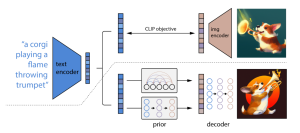
Have you ever wondered how generative AI is converting words into images? Or how generative AI models create a picture of something you’ve only described in words? Creating high-quality images from textual descriptions has long been a challenge for artificial intelligence (AI) researchers. That’s where DALL-E and DALL-E 2 comes in. In this blog, we will look into the details related to Dall-E 2. Developed by OpenAI, DALL-E 2 is a cutting-edge AI model that can generate highly realistic images from textual descriptions. So how does DALL-E 2 work, and what makes it so special? In this blog post, we’ll explore the key concepts and techniques behind DALL-E 2, including …
Facebook Responsible AI: Lessons, Examples

As technology continues to advance, it’s important that we prioritize ethical considerations and ensure that the development and deployment of AI technologies are responsible and fair. Meta (formerly known as Facebook) recognizes the importance of responsible AI and has taken several steps to ensure that their AI systems are developed and deployed in an ethical and fair manner. In this blog post, we’ll be exploring the latest responsible AI updates from Meta, which every company should take into consideration when developing and implementing their own AI strategies and systems. I will keep the blog short and crisp. If you want greater details, visit this page. Use Varied Datasets & Robust …
Python Tesseract PDF & OCR Example
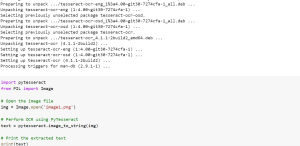
Have you ever needed to extract text from an image or a PDF file? If so, you’re in luck! Python has an amazing library called Tesseract that can perform Optical Character Recognition (OCR) to extract text from images and PDFs. In this blog, I will share sample Python code using with you can use Tesseract to extract text from images and PDFs. As a data scientist, it can be very helpful and useful to be able to extract text from images or PDFs, especially when working with large amounts of data found in receipts, invoices, etc. Tesseract is an OCR engine widely used in the industry, known for its accuracy …
Self-Supervised Learning: Concepts, Examples
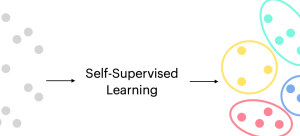
Self-supervised learning is a hot topic in the world of data science and machine learning. It is an approach to training machine learning models using unlabeled data, which has recently gained significant traction due to its effectiveness in various applications. Self-supervised learning differs from supervised learning, where models are trained using labeled data, and unsupervised learning, where models are trained using unlabeled data without any pre-defined objectives. Instead, self-supervised learning defines pretext tasks as training models to extract useful features from the data that can be later fine-tuned for specific downstream tasks. The potential of self-supervised learning has already been demonstrated in many real-world applications, such as image classification, natural …
ChatGPT Prompt to get Datasets for Machine Learning
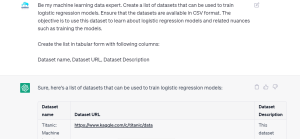
As the field of machine learning continues to expand, having access to high-quality datasets has become increasingly important. Datasets are the foundation of any machine learning project and play a crucial role in determining the accuracy and effectiveness of the resulting model. In this blog post, we will learn about a template ChatGPT prompt that can be used to gather a variety of datasets for different types of machine learning tasks. As data scientists As data scientists, it is recommended that we use a systematic approach to identify and select the right dataset for our machine learning project. This involves considering the specific requirements of our project, such as the …

I found it very helpful. However the differences are not too understandable for me